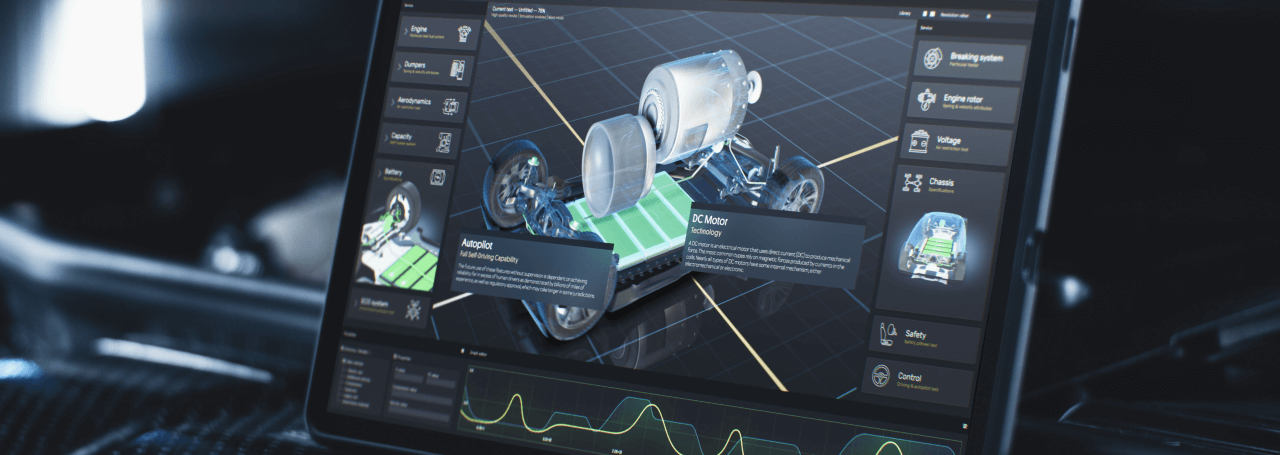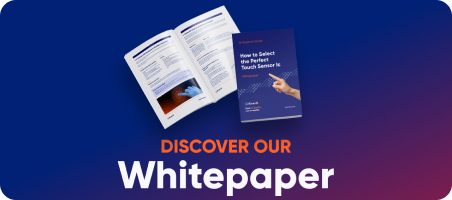
The first thing is that when you have a customized solution, you can define practically everything to ensure your product will have a competitive edge and future scalability.
When working with manufacturers like Riverdi, you are able to redesign and rebuild a display to your needs from scratch. But the point is that we suggest our customers a bit different and unique approach to customization. Here’s how we do it.
Advantages of Industrial Display Customization with Riverdi
- Competitive Edge & Scalability: Custom solutions enhance market competitiveness and future scalability.
- Flexible Customization: Standard products designed for easy adaptation to meet diverse needs.
- High-Quality Base Products: Use high-quality, documented standard products for prototypes before full customization.
- Efficient Process: Quick adjustments like glass thickness without redesigning core components.
- Detailed Collaboration: Thorough planning for specific requirements, ensuring precise customization.
- Cost-Effective for Large Production: Economical by removing unnecessary components for large quantities.
- Low MOQ for Testing: No minimum order quantity for standard products, ideal for market testing.
- Tailored Perfection: Unique shapes, logos, and bespoke features with reliable standard product durability.
- Comprehensive Options: Custom dimensions, brightness, touch panels, optical bonding, and advanced features.
- Clear Cost Estimates: Precise cost estimates provided after customization specifics are determined.
- Timely Delivery: Custom display production typically completed in 10-15 weeks.
Customization Powered by… Standard Products
At Riverdi, we have developed a range of standard products designed with high quality, longevity, and comprehensive documentation in mind. These displays are crafted for easy customization. It simply means that our standard displays are engineered to be easily adaptable to meet a variety of needs.
Take, for instance, our touchscreens. We design our touch sensors and touch FPC (Flexible Printed Circuit) with industrial-grade firmware and controllers, capable of passing even medical certification standards. Looking for thicker glass for your application? There’s no need to redesign the sensor or FPC—we only need to adjust the cover glass and retune the firmware. This seamless customization process makes our products highly versatile and user-friendly.
Starting with Standard, Moving to Custom
We typically recommend starting with a standard display, even if customization is the end goal. This approach allows you to build a prototype or mock up using our standard products, which can then be customized to your exact specifications. This method provides a solid foundation for your project and ensures that you understand the functionality and integration of the display before moving on to more specific customizations.

Deep Dive into Customization
When it comes to fully customized projects, collaboration from the outset is essential. Unlike standard products, custom solutions need detailed communication and planning. We begin by understanding your application’s requirements—whether it’s for indoor or outdoor use, with or without gloves, in direct sunlight or shadow.
Next, we discuss the necessary interfaces and components. For instance, if your application doesn’t require touch functionality, we can remove those components to reduce costs. Similarly, if you need specific connectors or changes to the PCB (Printed Circuit Board), we can redesign it to meet your needs.
Throughout this process, we focus on every detail, from touch sensitivity and screen brightness to control interfaces and operating temperatures. After determining the specifics, we provide a cost estimate for the customization. Depending on the complexity and availability of components, the development phase typically takes between 8 to 16 weeks.
The result of this collaborative process is a display solution perfectly tailored to your needs. Whether it’s custom glass with your logo, unique shapes, or specific cut-outs, we deliver a product that aligns with your vision. Our solutions maintain the longevity and reliability of our standard products, ensuring that your customized display is built to last.
Towards the Right Choice
Choosing between a standard and a custom solution depends on several factors, including the scale of production and market testing. If you expect to produce your device in large quantities (hundreds or thousands per year), a customized solution might be more cost-effective, as we can strip away unnecessary components and tailor the display to your exact needs.
However, if you’re uncertain about production quantities or still in the market testing phase, starting with a standard product is probably the best way. These products have no minimum order quantity (MOQ), are well-defined and easy to integrate into your device.
CUSTOMIZATION PROCESS WITH RIVERDI
STEP BY STEP
- DETAILED COMMUNICATION AND PLANNING
Understanding your requirements—indoor/outdoor use, with/without gloves, direct sunlight/shadow
- DETERMINING THE REQUIRED OPTIONS, COMPONENTS AND INTERFACES
(Development phase 8-16 weeks)
- Shape & Dimensions—from a compact coffee machine display to a large screen for an industrial HMI
- Color & Branding
- Glass Thickness & Cutouts—from 0.5mm to 6mm and more
- Display Features—resolution, brightness (200 cd/m² to a luminous 4500 cd/m²) and various interfaces (like RGB, LVDS, MIPI DSI or eDP)
- PCB Customizations—smooth integration and advanced features incorporation
- Advanced Custom Features
- Touch Panel Options—capacitive or resistive
- Optical Bonding—improving visibility and durability. Reducing reflectivity
- Image Enhancement—like anti-glare and anti-fingerprint coatings or brightness enhancement films
- Special Materials for Cover Lenses—from high-strength materials like Gorilla Glass to customizable PMMA cover lenses
- DETAILED COST ESTIMATE
- MANUFACTURING
(Production phase 10-15 weeks)
Contact Us
Deciding whether to opt for a standard or customized solution can be challenging. Fortunately, at Riverdi, our experts are always ready to assist you with practical advice and decision framework.
DISCOVER OUR
Whitepaper
Achieve the perfect user-display interaction with the right Touch Sensor IC. Ever faced issues with phantom touch events or certification? Boost your R&D like a pro with our Whitepaper!


